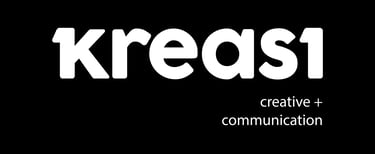Brand Audit: The Health Checkup Your Brand Needs
BRAND AUDIT
KREASI


Brand Audit: The Health Checkup Your Brand Needs
In the fast-paced world of business, brands are constantly evolving. To ensure your brand is healthy, relevant, and aligned with your business goals, a brand audit is essential. Think of it as a comprehensive checkup for your brand's vitality.
What is a Brand Audit?
A brand audit is a systematic evaluation of your brand's current state. It involves analyzing both internal and external factors that influence your brand's perception, performance, and equity. This process helps you identify strengths, weaknesses, opportunities, and threats (SWOT) related to your brand.
Why Conduct a Brand Audit?
Gain Clarity: A brand audit provides a clear picture of how your brand is perceived by your target audience, employees, and stakeholders.
Identify Gaps: It reveals inconsistencies between your intended brand identity and how it's actually perceived, helping you bridge the gap.
Uncover Opportunities: A brand audit can highlight untapped opportunities for growth, innovation, or differentiation.
Mitigate Risks: By identifying potential threats to your brand reputation or market position, you can proactively address them.
Inform Strategy: The insights gained from a brand audit serve as a foundation for developing effective brand strategies and campaigns.
Key Components of a Brand Audit
Internal Assessment
Brand Positioning: Evaluate your brand's mission, values, personality, and unique selling propositions.
Brand Messaging: Analyze your brand's communication across all channels, including marketing materials, website, and social media.
Brand Visuals: Assess your logo, color palette, typography, and overall visual identity,
External Assessment
Market Research: Gather data on your target audience, competitors, industry trends, and consumer perceptions.
Customer Feedback: Collect feedback through surveys, interviews, or social media listening to understand how your brand is perceived.
Competitor Analysis: Evaluate your competitors' strengths and weaknesses to identify areas where you can differentiate.
SWOT Analysis
Summarize your findings into a SWOT analysis to pinpoint your brand's strengths, weaknesses, opportunities, and threats.
Who Should Conduct a Brand Audit?
While you can conduct a basic brand audit internally, it's often beneficial to engage an external consultant or agency. They bring an objective perspective and specialized expertise in brand analysis.
When to Conduct a Brand Audit
Ideally, brand audits should be conducted regularly, such as annually or biannually. However, they are especially crucial during times of significant change, such as before a rebranding effort, a merger or acquisition, or when entering a new market.
The Bottom Line
A brand audit is not merely a checklist exercise. It's a strategic investment that provides valuable insights into your brand's health and potential. By taking the time to understand your brand inside and out, you can make informed decisions that drive brand growth and success.
Let me know if you'd like me to elaborate on any aspect of brand audits!
PT. Kreasi Untuk Nusantara
Kreasi is a multi-disciplinary brand consultant that focuses on helping design solutions for business growth through market research, brand strategies and branding Campaign.
Headquarters
contact@kreasi.agency
081234598942
© PT Kreasi Untuk Nusantara 2024.All rights reserved.
SCBD, One Pasific Place 15th floor Jl. Jendral Sudirman Kav 52-53, Jakarta, Indonesia.
Contact


